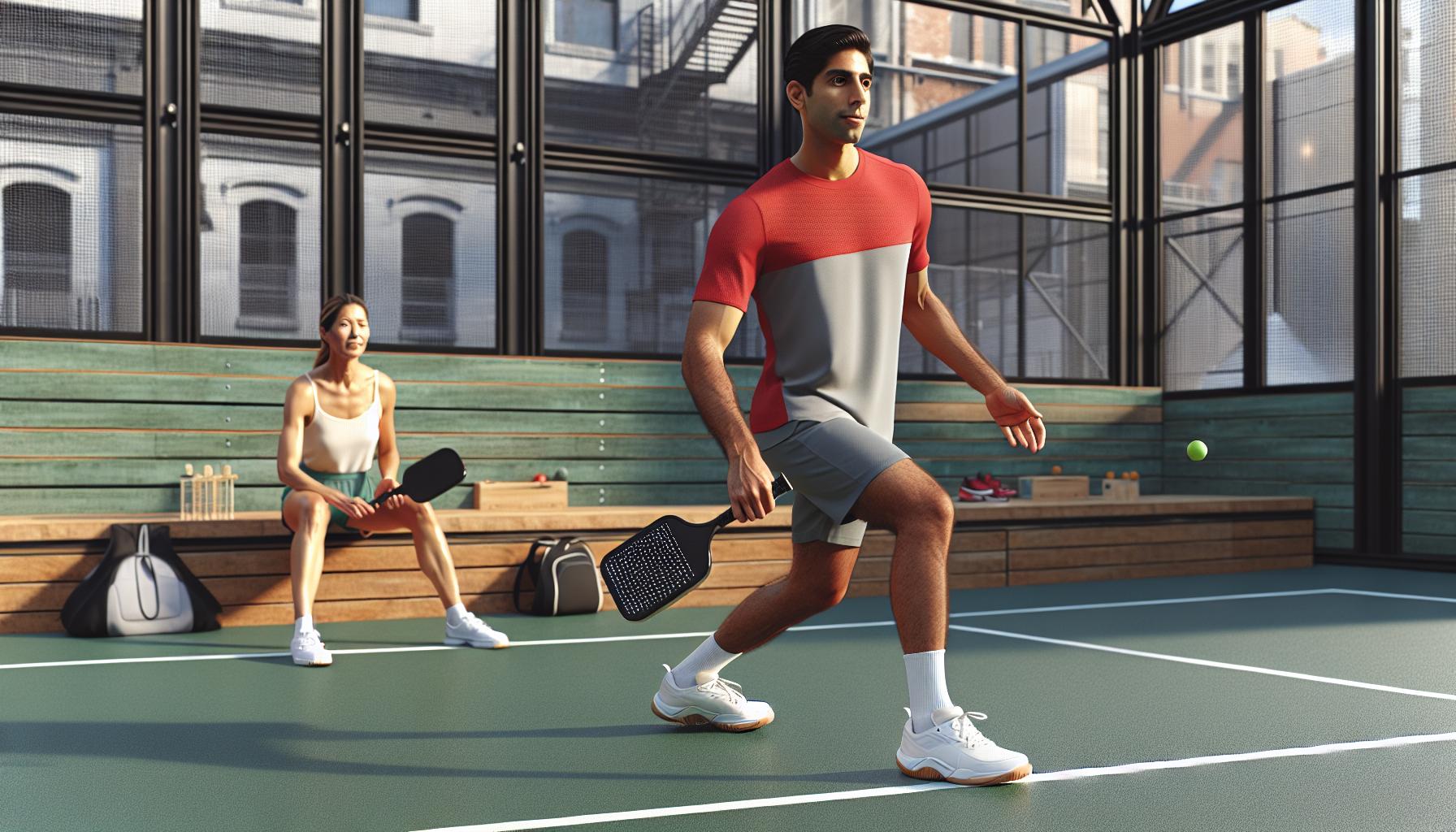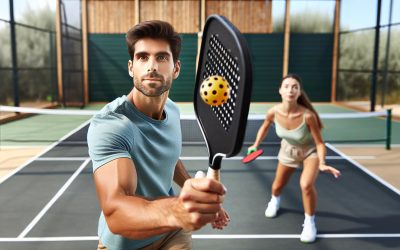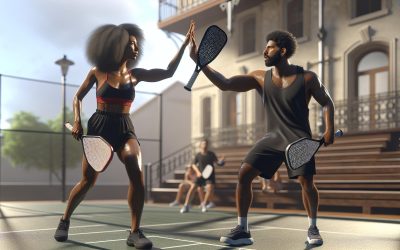Pickleball’s popularity is soaring, and with it, the diversity of players hitting the courts. Whether you’re facing a seasoned pro or a backyard enthusiast, adapting your strategy is key to staying one step ahead. It’s not just about how well you play; it’s about how well you play against the person standing across the net.
Every opponent brings their unique style and strengths to the game, turning each match into a thrilling puzzle. Do they favor power over precision? Are they a master of the dink shot? Understanding these nuances can transform your approach, making you a more versatile and formidable player. Let’s dive into how you can tailor your game plan to outsmart any opponent you encounter on the court.
Assessing Your Opponent’s Style
As you step onto the pickleball court, it’s crucial to quickly assess your opponent’s style. This insight allows you to adapt your strategy effectively, giving you an edge in the game. Recognizing whether they favor power over precision or if they’re more defensive can dictate your approach.
Watch Their Warm-Up
Often, a player’s warm-up routine is very telling. Pay attention to their shots and movements. Are they practicing a lot of serve and volley, indicating an aggressive style? Or do they focus on consistent, low shots, hinting at a defensive approach? Observing these patterns early on can be invaluable.
Identify Their Strengths and Weaknesses
Every player has their strengths and weaknesses, and identifying these can significantly impact your game plan. For example:
- Power Hitters: Often leave spaces open, which can be exploited.
- Defensive Players: Might struggle with unexpected, aggressive shots.
Gauge Their Footwork
Footwork is a window into a player’s skill and strategy. Agile and quick players may prefer a fast-paced game, while those with less mobility might rely on shot placement and strategy. Adjusting your game to either speed up or slow down can disrupt their rhythm.
Listen to Their Shot
The sound of a player’s shot can divulge a lot about their technique and power. A solid, confident hit usually means they’re comfortable with power shots. In contrast, a softer hit might indicate a more strategic, placement-focused player.
By assessing your opponent’s style through these lenses, you’re better prepared to adapt your strategy. Whether it’s choosing to counteract their power with precision or outmaneuvering a strategic player with speed, understanding your opponent is the first step to gaining the upper hand.
Adapting to Power Players

When facing power players in pickleball, it’s crucial to adjust your strategy to counteract their hard-hitting game. These opponents rely on strength and speed to dominate the court, often overwhelming their rivals with forceful shots. Understanding how to adapt can make a significant difference in swinging the momentum in your favor.
To begin with, focus on your positioning. Staying slightly back from the baseline allows you more time to react to powerful shots. By giving yourself this extra space, you’re better equipped to return deep drives and keep the point alive. Additionally, keeping a low center of gravity enhances your ability to move quickly and counteract the opponent’s power plays.
Improving your soft game is another effective strategy against power players. Utilizing soft shots, like dinks and drop shots, can force them out of their comfort zone. These players excel in fast-paced exchanges, so slowing down the game disrupts their rhythm. By mastering the art of the soft game, you can draw power players to the net on your terms, creating opportunities to catch them off balance with a well-placed lob or drive.
Anticipation plays a key role in handling power players. Pay close attention to their body language and racket preparation, as these cues can give you precious milliseconds to prepare for their shots. Enhancing your anticipation skills requires practice and keen observation, but it’s a valuable asset in neutralizing a power player’s advantage.
Effective communication with your partner, for those playing doubles, is equally important. Power players often attempt to control the pace and flow of the game, making it imperative to strategize with your teammate. Quick, concise communication can help in setting up defensive positions and executing counterattacks more efficiently.
| Strategy | Description |
|---|---|
| Positioning | Stay back from the baseline to react better to powerful shots. |
| Soft Game | Use dinks and drop shots to slow down the pace and draw opponents out of their comfort zone. |
| Anticipation | Observe cues from the opponent’s body language and racket preparation to anticipate and react to powerful shots quicker. |
| Communication | In doubles, communicate quickly and effectively with your partner to set up defenses and counterattacks against power-driven opponents. |
Countering Precision Players

When facing precision players in pickleball, it’s essential to have a plan that can neutralize their ability to place shots with pinpoint accuracy. Precision players excel at finding gaps and exploiting weaknesses, making them formidable opponents.
Increase Your Patience
One of the first strategies to employ is to increase your patience. Precision players often rely on their opponents making mistakes by growing impatient. Instead, focus on returning the ball consistently and waiting for a more favorable opportunity to attack. This approach forces the precision player to hit more balls and ups the chance they’ll make a mistake.
Improve Your Footwork
Enhancing your footwork is another critical component. Quick and efficient movement allows you to cover more court and reach shots that precision players aim for the corners and lines. Practicing lateral movements and sprints can significantly improve your ability to counter precision shots.
Use Baiting Techniques
Consider using baiting techniques. By intentionally leaving a part of the court seemingly open, you can lure a precision player into hitting where you want. This strategy demands quick reflexes and the ability to anticipate your opponent’s shot, but when executed correctly, it turns their precision against them.
Master the Soft Game
Mastering the soft game is vital when countering precision players. Skills like dinking and soft drop shots can disrupt their rhythm and force them into a short game, where precision alone may not be as effective. It’s essential to practice these shots to keep the ball low and just over the net, making it difficult for precision players to execute their usual strategy.
Communication in Doubles
In doubles, communication with your partner is paramount. Developing signals and discussing strategies can help both players understand who will cover which shots, reducing confusion and improving coverage. Precision players often aim for the middle or deep corners, so defining responsibilities can help in anticipating and countering their shots.
Analyze and Anticipate
Lastly, analyzing and anticipating your opponent’s favorite shots can play a significant role in countering precision players. Pay attention to patterns in their play, such as their preferred serves or go-to shots under pressure. This knowledge allows you to position yourself better and react more quickly, giving you an edge in breaking their precision.
Defending Against the Dink Shot

When you’re up against an opponent who excels in playing dink shots in pickleball, adjusting your defensive strategy becomes crucial. The dink shot, a soft, arcing shot that lands close to the net in the non-volley zone, is favored by players who aim to outsmart their opponents by forcing them to move forward and potentially commit errors. Defending against this tactic requires patience, anticipation, and a good understanding of positioning on the court.
One of the first steps in defending against the dink shot is improving your footwork. This includes staying on the balls of your feet and being ready to move forward swiftly when you anticipate a dink shot. Quick lateral movements are also essential as they enable you to cover more of the court and return dinks that are aimed near the sidelines.
Another key aspect is mastering the soft game yourself. When your opponent sends a dink shot your way, being able to respond with a controlled, precise dink shot of your own can throw them off balance. This means practicing your own dink shots, both forehand and backhand, until they become second nature. By engaging in a dink rally, you can wait for the opportune moment when your opponent makes a slight mistake, providing you with a chance to introduce a more aggressive shot.
Positioning is equally critical when defending against dink shots. Players should aim to stay as close to the non-volley zone line as possible without stepping into it. This position reduces the angles your opponent can exploit and gives you the best chance to reach and return the dink shots effectively. However, be wary not to stand too close to the net, which can leave you vulnerable to lob shots over your head.
Anticipating your opponent’s next move plays a substantial role in your defense. You’ll need to pay attention to their paddle preparation and body language to predict whether a dink shot is coming. If you sense a dink shot, prepare to move forward quickly and counter it with a soft shot of your own. Anticipation becomes more intuitive with experience, so playing against dink shot specialists and analyzing their patterns can be valuable.
- Use split step timing: Just as your opponent hits the ball, execute a small hop that lands you on the balls of your feet, ready to move in any direction. This
Developing a Versatile Game Plan

In the dynamic world of pickleball, players often face opponents with varying skill sets and strategies. Developing a versatile game plan is crucial for adapting to these diverse playing styles and maintaining a competitive edge. A versatile strategy encompasses not only technical skills but also mental agility, allowing players to switch tactics mid-game seamlessly.
Mastering a Well-Rounded Skill Set
To adapt effectively, players must first ensure they have a well-rounded skill set. This includes:
- Consistent serves and returns: The ability to serve and return under pressure is fundamental. Practicing a variety of serves, including power serves and soft angle serves, prepares players for any opponent.
- Strong net play: Players should hone their skills at the net, mastering both powerful smashes and delicate volleys. This versatility can put opponents on the defensive.
- Defensive prowess: Developing quick reflexes for defense allows players to turn the tide during a rally. Techniques like the split step enhance mobility, enabling sudden direction changes.
Analyzing the Opponent
Observing and analyzing the opponent’s play style early in the match is vital. Key observations include:
- Preferences for forehand or backhand shots
- Tendency to play aggressively or defensively
- Level of comfort with volley exchanges at the net
These insights allow players to anticipate moves and tailor their strategy accordingly.
Strategic Flexibility
Having established a foundation of skills and opponent analysis, players must then practice strategic flexibility. This means being prepared to:
- Shift between aggressive and defensive play based on the flow of the game. If an opponent struggles with aggressive shots, increasing the pressure may lead to errors. Conversely, against a power player, adopting a more defensive stance can force the game into longer rallies.
- Alter serving strategy depending on the opponent’s return effectiveness. A powerful serve may intimidate some opponents, while a softer, more strategic serve may disrupt the timing of others.
- Change positioning on the court in response to the opponent’s tactics. Moving closer to the net may intimidate some opponents, while staying back might be effective against those who favor a groundstroke game.
- Staying calm and focused regardless of the score
- Analyzing the effectiveness of current strategies and being willing to change tactics if they’re not working
- **Cons
Conclusion
Mastering the art of adapting your pickleball strategy against various opponents is key to elevating your game. It’s not just about having a strong serve or a powerful smash; it’s about being a chameleon on the court. By observing your opponent’s strengths and weaknesses and being ready to switch up your tactics, you’ll keep them guessing and on their toes. Remember, the most successful players are those who can stay calm under pressure, think on their feet, and embrace change when needed. So go out there, be flexible, and watch your game reach new heights.














0 Comments